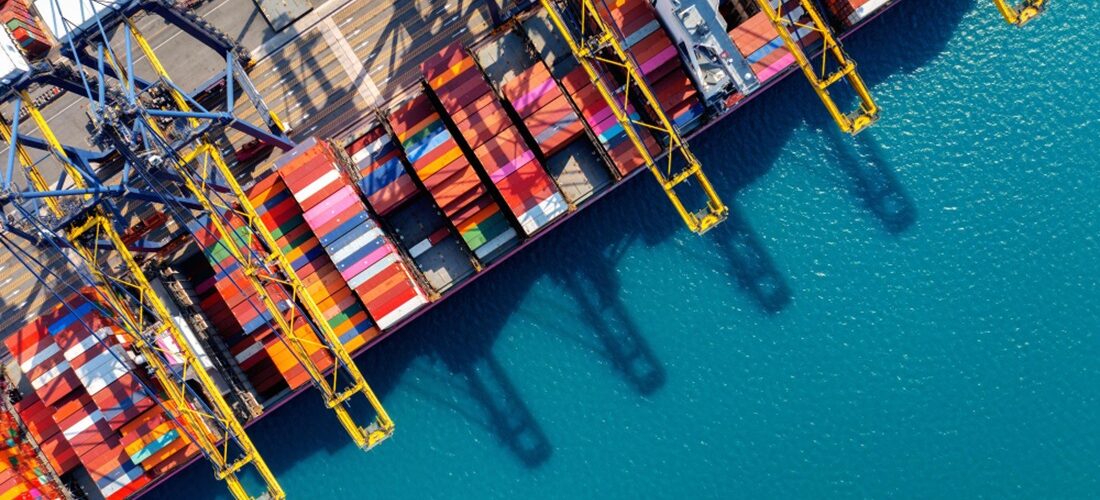
New DataLiner Data: Brazilian Container Exports Decline, Imports Show Growth in September
Nov, 01, 2023 Posted by Gabriel MalheirosWeek 202341
Recently released data from Datamar’s Business Intelligence team on container movements in September on the East Coast of South America indicate a drop in shipments from Brazil and Argentina.
In the first nine months of the year, Brazil exported 2,028,466 TEUs, marking a 3.4% decrease compared to the same period last year. In September, there was a 3.8% decline compared to September 2022, with the lowest volume for that month in the last five years.
Check out the chart below, comparing Brazilian container exports in the first nine months of the year from 2019, based on DataLiner data:
Brazilian Container Exports | Jan-Sep | 2019 – 2023 | TEU
Source: DataLiner (click here to request a demo)
Brazilian container exports of sugar continue to stand out. Year-to-date, sugar exports have grown by 69% compared to the first nine months of 2022, with notable increases in shipments to Colombia (+1,064%) and China (+2,360%).
Imports
On the other hand, Brazilian container imports have shown a 5.2% growth in the cumulative first nine months of the year compared to the same period in 2022. In September, there was a 6.3% decrease in imports, according to DataLiner data. Nonetheless, these figures surpass those of September 2021, 2020, and 2019.
See the chart below comparing Brazilian imports from January to September over the past five years:
Brazilian Container Imports | Jan-Sep | 2019 – 2023 | TEU
Source: DataLiner (click here to request a demo)
Some import data is noteworthy. One of the highlights is the increased import of hand tools (+115%) when comparing the first nine months of 2023 with the same period in 2022.
Brazil also received more shoes from Vietnam (+138.9%) and imported more glass cups. Imports of Chinese cups, for example, grew by 83.8% in the year-to-date.
Regarding Chinese imports, there was a significant increase in containerized fertilizer (+345%) and umbrella (+138.2%) imports in the first nine months of the year compared to the same period in 2022.
Plate
Argentina, amidst political uncertainty about its future president, saw container exports drop by 7.2% in the cumulative January to September 2023 compared to 2022. In the ninth month of the year, the decline was 5% in the same comparison.
Argentinian imports, on the other hand, fell by 9.8% in the January to September 2023 period compared to 2022. In the month, the decline was more pronounced, at 13.9%.
Conversely, Uruguayan exports remained stable, with a slight growth of 1.9% in the first nine months of the year compared to the same period in 2022. Concerning Uruguayan imports, the values are 6.9% higher in the cumulative 2023 (January to September) compared to 2022.
Maritime Freights
Maritime freights serve as a vital indicator of international trade, offering insights into the demand for imports and exports within a particular region. So, how are maritime freights currently faring on the East Coast of South America?
According to the Platts bulletin from S&P Global, Latin American rates have gained momentum over the past week. Importations from Northern Asia to the East Coast of South America have surged by 30% in a week, reaching $2,600/FEU. Market sources attribute this jump to a shortage of vessel space exacerbated by the floods in the southern region of Brazil.
“There is a space crunch, and rates are rising,” noted a Brazilian freight agent. A second logistics source confirmed capacity constraints, citing a busy market with blank sailings. “The China to Brazil market has been quite active in recent weeks, with blank sailings and fully booked ships,” the source added.
On the other hand, freight rates from the US Gulf Coast to the East Coast of South America have remained stable at $1,650. Nevertheless, return rates from the East Coast of South America to the USGC have increased by $100, reaching $1,050/FEU. “We are entering the high season now for Brazilian exports,” shared a logistics source.
In summary, amid the challenges in the landscape of exports and imports in South America, the most recent DataLiner data reveals a complex outlook for trade in the region, influenced by a range of economic and climatic factors.
-
Grains
Sep, 08, 2021
0
Soybeans: Brazilian exports totaled 757,393 tons in September
-
Ports and Terminals
Jun, 16, 2019
0
Santa Fé to provide a warehouse for customs cargo
-
Trade Regulations
Nov, 24, 2023
0
EU agrees to ban exports of waste plastic to poor countries
-
Ports and Terminals
Jun, 08, 2022
0
Russia persistently bombs Ukrainian ports, silos, and crops

